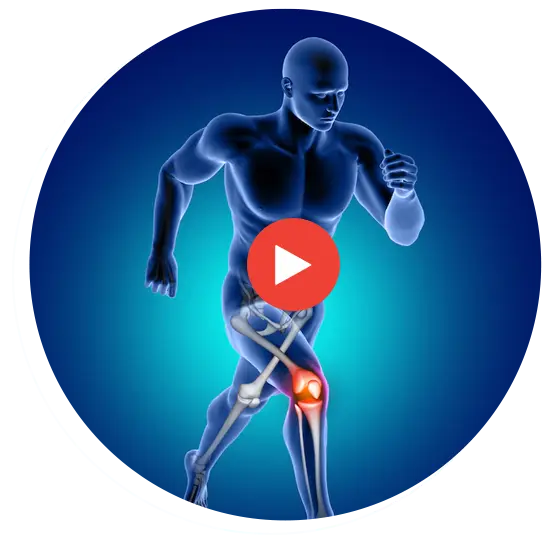

TELMDCARE
What is acute pain?
Affecting millions of people each year, acute pain is one of the most common phenomena that plague our population today. It is generally described as a sharp and quick jolt of pain that suddenly affects random parts of the body. The pain can typically last for a few seconds, but the intensity and severity of the pain may vary significantly from mild to sharp.
While some people only experience this issue in small flashes, others deal with it for several months. Acute pain can signify a severe disease or condition and might require immediate care, especially if it's accompanied by breathing difficulties, bleeding, or a change in consciousness.
Book an Appointment for Only
TELMDCARE
Is covered by many popular
insurance plans

TELMDCARE
What are the different types of pain?
Various disorders, diseases, and health conditions that can range from mild injuries to debilitating diseases can cause pain in any part of your body. No matter the cause, pain is generally categorized as acute, chronic, referred pain, and cancer. If you're unsure what type of pain you're suffering from, here's a quick rundown of all the categories.

TELMEDCARE
What we treat
We treat a variety of acute and chronic conditions and provide expert medical advice and guidance for our patients.
Read More
TELMDCARE
Patient Goals for Acute Pain
Various goals and outcomes are commonly considered when it comes to planning for the care of patients with acute pain. The patient demonstrates the use of relaxation techniques and diversional activities. They describe their pain control at a level that is satisfactory.
The patient's well-being is improved by the use of non-pharmacological and pharmacological pain-relief techniques. They also show signs of improvement in their mood.

Nursing Interventions for Acute Pain
Nurses are not always able to determine whether or not acute pain is real. However, they can help patients manage their pain by implementing various interventions.
In addition to medication, non-pharmacologic methods can also be used to manage pain. These include lifestyle changes, cognitive-behavioral therapy, and physical therapy.
An effective non-pharmacologic method for managing pain is a distraction. This technique involves reducing one's awareness of the pain by heightening one's concentration on non-painful stimuli. Some of these include reading, watching TV, and playing video games.
The effects of stress on one's perception of pain are usually lessened by engaging in the relaxation response. Some of these include deep breathing and meditation.
The guided imagery technique involves using mental images or guiding the patient to visualize an event that will distract them from the pain. This technique can also be used to help patients manage their pain by developing strategies to avoid negative thoughts. Various forms of CBT techniques, such as hypnosis, meditation, and spiritual guidance, can also be utilized by patients.
TELMDCARE
As Seen On

Let TelMDCare Help You
With Acute Pain
As mentioned earlier, pain can occur anywhere and for a multitude of reasons, but you don't need to suffer in silence when our expert doctors are just a call away.
At TelMDCare, we offer immediate consultation services where you can get in touch with a virtual doctor for pain relief or any number of other acute conditions by making an appointment with one of our doctors online.
Our general practitioner will start by assessing your condition, giving you an official diagnosis, quickly followed by consultation & prescription. We believe quality medical care is a fundamental right, and no one should suffer in silence because of hefty treatment fees and costs. We offer virtual consultation services for a mere $43. Our first follow-up is also free, ensuring you get quality treatment for your ailments without burning a hole in your pocket.
At TelMDCare, we ensure quality health and medical care is convenient and affordable, offering you an online chat system with little to no waiting time. Quality, affordability, convenience, and reliability, what more could you possibly want from an online medical platform?
So, what're you waiting for? Let us help you find the cure for all your ailments today! Sign up and book an appointment with our doctors, and they'll be more than happy to help you any way they can.
Our best online doctors on call ensure that the services we provide are adequate, high quality, and affordable. Get in touch with us today for more details or Sign Up for a quick consultation.
TELMDCARE
Acute Pain FAQs
Since both conditions have the same symptoms, it can be difficult for people to identify and differentiate between the two; however, acute pain is a lot more short-lived issue when compared to chronic pains.
But if acute pain is not appropriately treated, it can quickly qualify as chronic, causing you a lot of pain and discomfort for many months and even years.
Furthermore, acute pain generally lasts for less than three months and is your body's normal response to injury, disease, or other underlying conditions. Think about burning your hand while cooking; you feel intense pain in your hand for a few minutes or hours before the inflammation finally calms down.
On the other hand, chronic pain occurs when your brain continues firing pain signals long after you've recovered from an illness or injury. Your peripheral nerves are damaged, causing your brain to send pain signals after the initial injury, leading to months of discomfort.
If your condition lasts for more than three months, it's best to seek professional help, find out the underlying issues, and have them treated as soon as possible. Ignoring your condition and persistent pains will only make the situation worse.
Medication isn't your only savior when it comes to pain relief; you can try other techniques at home to manage and ease your pain. Regular exercise, deep breathing, reducing daily stressors, utilizing hot and cold compressors are some of the most effective and simple ways to find treatment for your ailments.
Even though acute pain is rarely ever a cause for concern and is usually resolved in a few months, there's no denying that it can sometimes get out of hand and might indicate a severe or life-threatening condition, such as a heart attack.
If you or someone you know is suffering from chest pains that originated from or moved to the arm, shoulder, neck, or jaw, headaches, stiff neck, weakness, bleeding, nausea or vomiting. In that case, it could be a serious cause for concern and require immediate medical attention.



